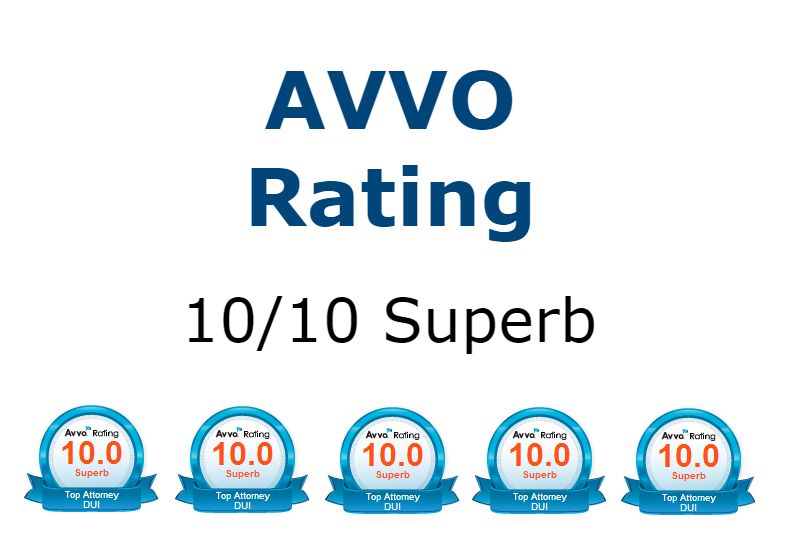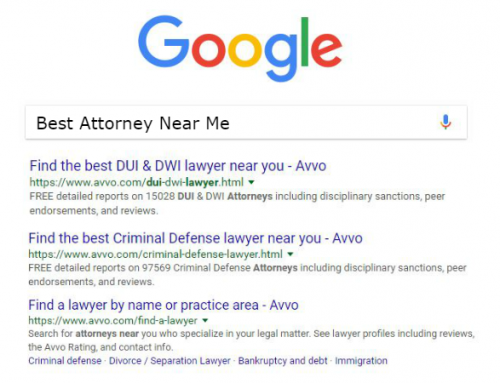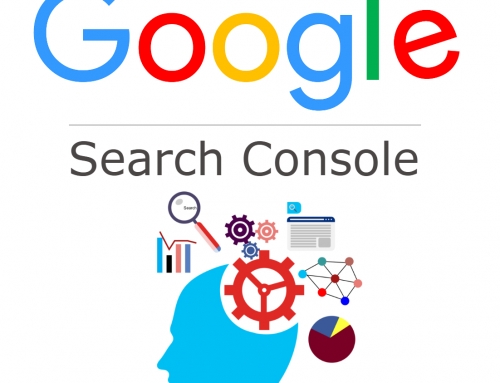What are rich snippets, and how can your law practice leverage them for enhanced performance and results?
The best way to understand any concept is to see it in action. In the search results below, you see the local listing for a law firm that also includes a list of site links associated with the website. The listing below that has a nice visual 5 star rating for the attorney from Avvo. Those additional lines of text are called Rich Snippets. They are used to tell your prospective clients what to expect from the page or website before they click-through.
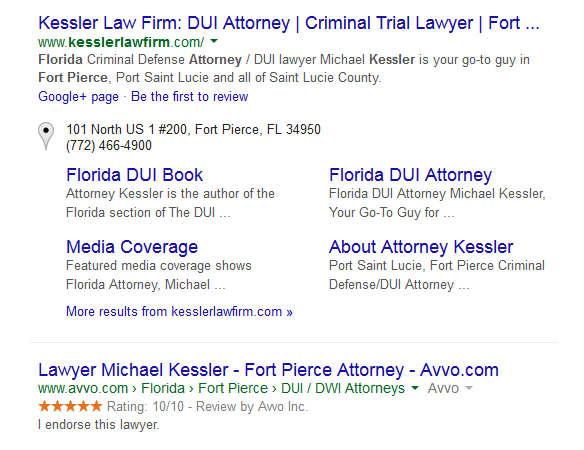
Rich snippets on your website are used to help search engines understand the content on your page(s). Allowing for more detailed information to be displayed in your search engine listings can be a powerful tool to maximize your online presence.
Benefits of Rich Snippets
Before we get into the “how?” let’s take a look at the “why.” Why bother with rich snippets? What benefits do they offer to for your website and practice?
- Increased click-through rates. Searchers can clearly see that you meet their needs. Research indicates that CTRs may be boosted by 20- 30%.
- Decreased “bounce rates.” “Bounce” is when users click through to a site and leave shortly after. You decrease this by demonstrating your relevance before they enter your website.
- More qualified traffic and conversion rates. Because people know what to expect, the click-through, already more engaged and interested. This often prompts them to take the next step, i.e. complete a call to action.
- Heightened visibility. Sites with rich snippets are more visually engaging, and they stand out more.
- Ability to communicate your unique value. You can, at a glance, tell potential clients what you specialize in, your ratings in the community, and whether or not you’re the “go to guy,” or woman, in your field.
In short, rich snippets can have a profound influence on how searchers view your site, as well as its relevance and authority.
Structured Data
In our previous post, we talked about semantic search and semantic markup. Semantic search increases the sophistication of traditional search, enabling engines to make connections, use context, and infer meaning.
Semantic markup is a method of “marking up” content to reinforce the semantics, or meaning, of various elements. The goal is to help search engines “better understand” their websites. This structured data markup can increase visibility, click-through rates, and conversion rates.
So what does this have to do with rich snippets? You don’t create the rich snippets. They are generated algorithmically. In order for your website to be eligible for rich snippets, it needs to be marked up. (As we mentioned in our previous post, Schema.org, a set of schemas recognized by Google, Bing, Yahoo, and Yandex, is one way to accomplish this).
Google supports rich snippets for:
- Reviews.
- People.
- Video content.
- Breadcrumbs.
- Events.
- Businesses and organizations.
- Music.
- Products.
- Recipes.
Recipes and music may not be relevant for your law practice! But these are:
- Reviews. Reviews and ratings, like that shown in the example at the top, help build trust with audiences, as well as establishing your authority as an attorney.
- People. You’re a person; you qualify! You can include your name, an image, URLs, address, and job/role.
- Breadcrumbs. A breadcrumb trail is a set of links (breadcrumbs) that can help a user navigate and understand your website. Having breadcrumbs present on your site allows search engines to understand and present the information on your pages in search results. In the image example the additional pages shown under the local listing are a result of breadcrumbs being marked up on the website.
- Video content. Videos resonate with searchers and make a powerful content marketing tool. You can add markup for name of the video, description, thumbnail image, duration, and upload and expiration dates.
- Events. If you are lecturing at a community function or school, teaching a seminar, or holding another event, mark it up with the time and date, location, brief description, and URL links to your website.
Next, you test your markup with Google’s structured data testing tool. If all is well, it will render a rich snippet for your pages. And if not, Google provides a Troubleshooting guide which can help you remedy mistakes (e.g., not enough information) that prevent generation of rich snippets.
Here’s an example of a rich snippet for a person.
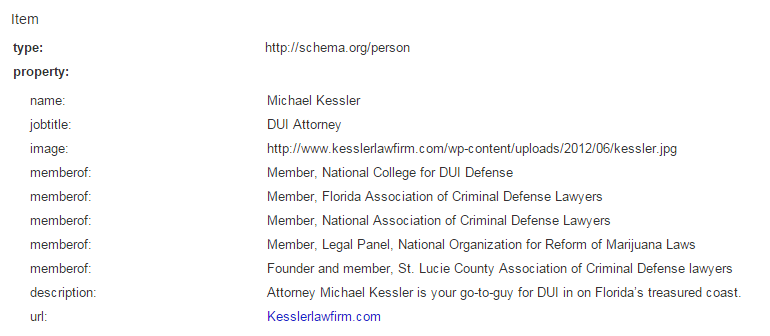
Rich Snippet Tips
How can you ensure rich snippets benefit your site?
Master Your Markup
- Schema.org is the markup method recommended by Google.
- Make sure your markup is correct and accurately tells Google about your page. A mistake, such as having a Review without a Reviewer, can result in a failure to generate rich snippets.
- Follow all usage guidelines, provided by Google.
- Only markup content that is visible to searchers. Google will not generate rich snippets for “hidden” content, or that which is not seen by actual visitors to your website.
- Make sure your markups accurately describe the contents of the page.
Wait
If you’ve just updated your markup, rich snippets may not show for some time. The best advice: make sure it’s correct by using the structured data tool, and then…wait for a few days.
Never Try to Game Google
Google has begun attacking “spammy structured markup” by issuing manual penalties to sites.
Markup on some pages on this site appears to use techniques such as marking up content that is invisible to users, marking up irrelevant or misleading content, and/or other manipulative behavior that violates Google’s Rich Snippet Quality guidelines.
A manual penalty can dramatically affect your position on the search engine results pages, which, of course, greatly diminishes traffic and impacts your online authority. Even unintentional markup mistakes can result in penalties, so be sure to learn Google’s quality guidelines or outsource to a trusted partner.
Rich snippets allow Google to provide searchers with the information they need to decide if a site is relevant to them. They also allow you to stand out from the competition, boost click-through rates, decrease bounce rates, and attract better quality traffic. Semantic markup and rich snippets are a powerful combination of tools for lawyers; ensure your content is working its hardest for your practice.




